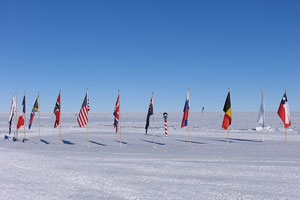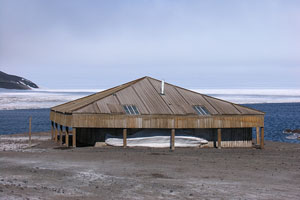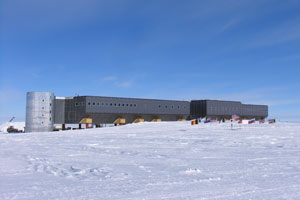
Antarctica History & Exploration
Map of Antarctica > Antarctica History | Antarctica Travel Tips |
Antarctica Political Map
 British explorer and captain James Cook, who crossed the Antarctic waters
three times between 1772 and 1775, was most likely the first to do
so. While he never saw the continent of Antarctica, he believed
that there was a tract of land in that part of the world that contributed
to iceberg formation in that part of the Southern Ocean.
British explorer and captain James Cook, who crossed the Antarctic waters
three times between 1772 and 1775, was most likely the first to do
so. While he never saw the continent of Antarctica, he believed
that there was a tract of land in that part of the world that contributed
to iceberg formation in that part of the Southern Ocean.
Cook also saw sea mammals such as whales and seals on his travels across the Antarctic waters, and his reports led whalers and sealers to the area to find skins and oil. More and more people flocked to the area, and in 1820 Antarctica was first sighted. But it wasn't until 1895 that a group of Norwegian whalers actually landed on the continent. Just three years later, in 1898, a group of Belgian scientists experienced an extended stay on the landmass when their ship became lodged in pack ice, and remained there for 13 months.
 One of the earliest and most famous expeditions to reach Antarctica was
Ernest Shackleton's Nimrod expedition in 1907.
Douglas Mawson, who later led the Australasian Antarctic Expedition from
1911 to 1914, was on this expedition. Mawson's later expedition is
famous for yielding many developments in magnetism, geology, biology, and
meteorology.
One of the earliest and most famous expeditions to reach Antarctica was
Ernest Shackleton's Nimrod expedition in 1907.
Douglas Mawson, who later led the Australasian Antarctic Expedition from
1911 to 1914, was on this expedition. Mawson's later expedition is
famous for yielding many developments in magnetism, geology, biology, and
meteorology.
A race to the South Pole ensued in 1911 and 1912, between the team of Norwegian Roald Amundsen and that of Briton Robert Falcon Scott. While the Norwegian team relied on dogs and sleds to reach the South Pole, the British team used Manchurian ponies. The Norwegian team reached the South Pole first, a full 34 days ahead of the British team. Unfortunately, all five men on the British team died on the return trip home, just 11 miles from the supplies they would have needed to stay alive.
 In 1915 Shackleton once again visited the area, this time with the goal
of traversing the entire continent. He and his 28 men became
stranded in sea ice, which crushed their ship. They spent an entire
year on drifting ice before they used lifeboats to reach Elephant Island,
which is located at the tip of the Antarctic Peninsula. From there
they sailed 800 miles in a small boat to South Georgia, eventually
rescuing the remainder of the stranded men.
In 1915 Shackleton once again visited the area, this time with the goal
of traversing the entire continent. He and his 28 men became
stranded in sea ice, which crushed their ship. They spent an entire
year on drifting ice before they used lifeboats to reach Elephant Island,
which is located at the tip of the Antarctic Peninsula. From there
they sailed 800 miles in a small boat to South Georgia, eventually
rescuing the remainder of the stranded men.
Today, any civilization or society on Antarctica is located on one of its approximately 50 research stations. The area can be visited by tourists, which can number more than 20,000 in the summer.
All rights reserved.
Antarctica Map Antarctica History & Exploration • Antarctica Travel & Tourism